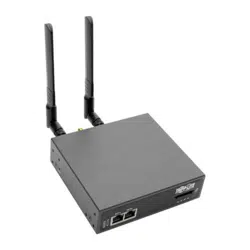Loading ...
Loading ...
Loading ...

22
• In the example shown below, local administrators on local Management LAN have direct telnet access to the console server
(and attached serial ports), while remote administrators using dial-in or cellular have no such telnet access (unless they set
up a VPN).
• Respond to ICMP echoes (i.e. ping) Service access options can be configured at this stage. This allows the console server
to respond to incoming ICMP echo requests. Ping is enabled by default. However for security reasons, this service should
generally be disabled post-initial configuration.
• You can also configure to allow serial port devices to be accessed from assigned network interfaces using Raw TCP, direct
Telnet/SSH, unauthenticated Telnet/SSH services, etc.
• Click Apply to apply your services access selections.
3.4.1 Brute Force Protection
Brute force protection (Micro Fail2ban) temporarily blocks source IPs that show malicious signs, such as too many password
failures. This may help mitigate scenarios where the Tripp Lite device’s network services are exposed to an untrusted network
such as the public WAN, and scripted attacks or software worms are attempting to guess (brute force) user credentials and
gain unauthorized access.
Brute Force Protection may be enabled for the listed services. Once protection is enabled, three or more failed connection
attempts within 60 seconds from a specific source IP trigger it to be banned from connecting for the next 60 seconds. Active
Bans are also listed and may be refreshed by reloading the page.
Note: When a Tripp Lite device is running on an untrusted network, it is recommended that a variety of strategies be used to lock down
remote access. This includes strong passwords (or even better, SSH public key authentication), VPN, and using Firewall Rules to whitelist
remote access from trusted source networks only. Refer to the Knowledge Base for details.
3. System Configuration
Loading ...
Loading ...
Loading ...
